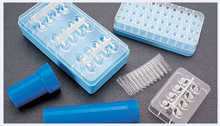The healthcare industry is no stranger to technological advancements. Among the many innovations shaping this sector, plastic injection molding techniques have played a pivotal role in revolutionizing the design, production, and quality of medical devices and components. In recent years, several trends have emerged that showcase how these techniques are enabling breakthroughs in healthcare.
1. Miniaturization for Minimally Invasive Surgery
Advancements in plastic injection molding in healthcare have allowed for the production of smaller and more intricate medical components. This is particularly crucial for minimally invasive surgery (MIS), where tiny instruments and devices are inserted through small incisions. Precision molding techniques have made it possible to create complex, miniature parts used in endoscopes, catheters, and robotic surgical tools. The result is reduced patient trauma, faster recovery times, and improved surgical outcomes.
2. Biocompatible Materials for Implants
The development of biocompatible materials suitable for injection molding has expanded the possibilities in the realm of medical implants. Biocompatible plastics like polyethylene, polyurethane, and silicone can be molded into various implantable devices, such as joint replacements, pacemaker enclosures, and drug-delivery systems. These materials offer excellent biocompatibility, durability, and resistance to bodily fluids, reducing the risk of adverse reactions and increasing the longevity of implants.
3. Drug Delivery Systems
Plastic injection molding has revolutionized drug delivery systems, making them more patient-friendly and efficient. The technology allows for the precise manufacturing of devices like insulin pens, inhalers, and autoinjectors. These devices not only provide accurate dosing but also enhance patient compliance and ease of use, improving overall healthcare outcomes.
4. Customization and Patient-Specific Devices
One of the most exciting trends in healthcare driven by plastic injection molding is the ability to create patient-specific medical devices. Techniques like 3D printing combined with injection molding enable the production of personalized implants, prosthetics, and orthodontic devices tailored to an individual’s unique anatomy. This not only improves comfort and functionality but also reduces the risk of complications and enhances patient satisfaction.
5. Reduced Costs and Faster Prototyping
Plastic injection molding has become more cost-effective and efficient, allowing for faster prototyping and product development. This trend has lowered the barriers to entry for medical device startups and enabled the creation of affordable, high-quality devices. Speedier prototyping also facilitates the testing of new concepts and iterations, accelerating innovation in healthcare.
6. Integration of Electronics
Injection molding is no longer limited to shaping plastic components; it can now integrate electronics seamlessly. This has led to the development of smart medical devices, such as wearable health monitors, infusion pumps with built-in sensors, and connected drug delivery systems. These devices provide real-time data and enable remote monitoring, enhancing patient care and management.
7. Sterile and Single-Use Products
The healthcare industry demands high standards of hygiene and infection control. Injection molding techniques have enabled the production of sterile, single-use medical products like syringes, IV connectors, and surgical instruments. These disposable items not only reduce the risk of infection transmission but also eliminate the need for time-consuming sterilization processes.
8. Sustainable Healthcare Solutions
As sustainability becomes a global concern, injection molding techniques are adapting to produce more eco-friendly healthcare products. Bio-based plastics and recyclable materials are being used to create sustainable medical devices and packaging. Manufacturers are also exploring ways to reduce waste and energy consumption in the injection molding process, aligning with environmentally responsible healthcare practices.
A Healthy Bottomline
Plastic injection molding techniques are at the forefront of transforming healthcare by enabling the development of smaller, more precise, and patient-specific medical devices. From minimally invasive surgical tools to biocompatible implants and smart drug delivery systems, these trends are improving patient outcomes, reducing costs, and enhancing the overall quality of care. As technology continues to evolve, we can expect even more groundbreaking innovations in healthcare driven by plastic injection molding techniques, ultimately benefiting patients and healthcare providers alike.
